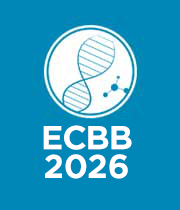Title: Transcriptomic and metabolomic comparison of a mangrove fungus response to heavy metal cadmium stress
Abstract:
Mycoremediation has become an important approach for managing heavy metal pollution. Cadmium (Cd) is a well-known global contaminant, listed among the most hazardous inorganic substances, but there are few reports about its remediation by mangrove fungi, the highly potential mycoremediation agent. Here, the Cd remediation mechanism of Trichoderma atroviride isolated from the mangroves of Terengganu, Malaysia, was explored. The fungus was shown to be highly tolerant to Cd-contaminated medium. In the present study, to reveal the Cd tolerance mechanism of T. atroviride, transcriptomic analyses of differentially expressed genes was carried out, followed by metabolite profiling using multiplatform analysis: Gas Chromatography–Mass Spectrometry (GC-MS), proton Nuclear Magnetic Resonance (1H NMR), and Liquid Chromatography Quadrupole Time-of-Flight Mass Spectrometry (LC-QTOF-MS). The transcriptomic results revealed 2232 upregulated and 3289 downregulated differentially-expressed genes, with metabolic pathways as the most significantly enriched. Amino acids metabolism, biosynthesis of amino acids, glyoxylate and dicarboxylate metabolism and glutathione metabolism are the key metabolic pathways detected in the response to Cd stress by the fungus. Moreover, metabolomic analyses identified 127 metabolites, with amino acids, carbohydrates and organic acids having the most significant roles in the Cd stress response. Eleven metabolic pathways were significantly enriched including seven amino acid metabolisms, indicating their important roles in the fungal defense response. A total of 39 potential biomarkers were identified with three biomarkers – taurine, glutamine, and citrate - can be selected for further validation of their roles in response to Cd stress. These results increase our understanding of the coping mechanisms of T. atroviride in response to Cd stress and provided a reference for the application of T. atroviride in the bioremediation of heavy metals pollution.
Keywords: mangrove fungus, heavy metal stress response, metabolic pathways, metabolites, biomarkers.
Audience Take Away Notes:
- The audience will be able to explore the response mechanism to heavy metal stress by other fungi with bioremediation potentials
- This will help the audience to recommend new bioremediators of heavy metal pollutants
- Other faculty could use to expand their research or teaching in identifying specific biomarker(s) that detects heavy metal pollutants
- The biomarkers can be used in biosensors that could provide rapid and efficient detection of heavy metal pollutants



